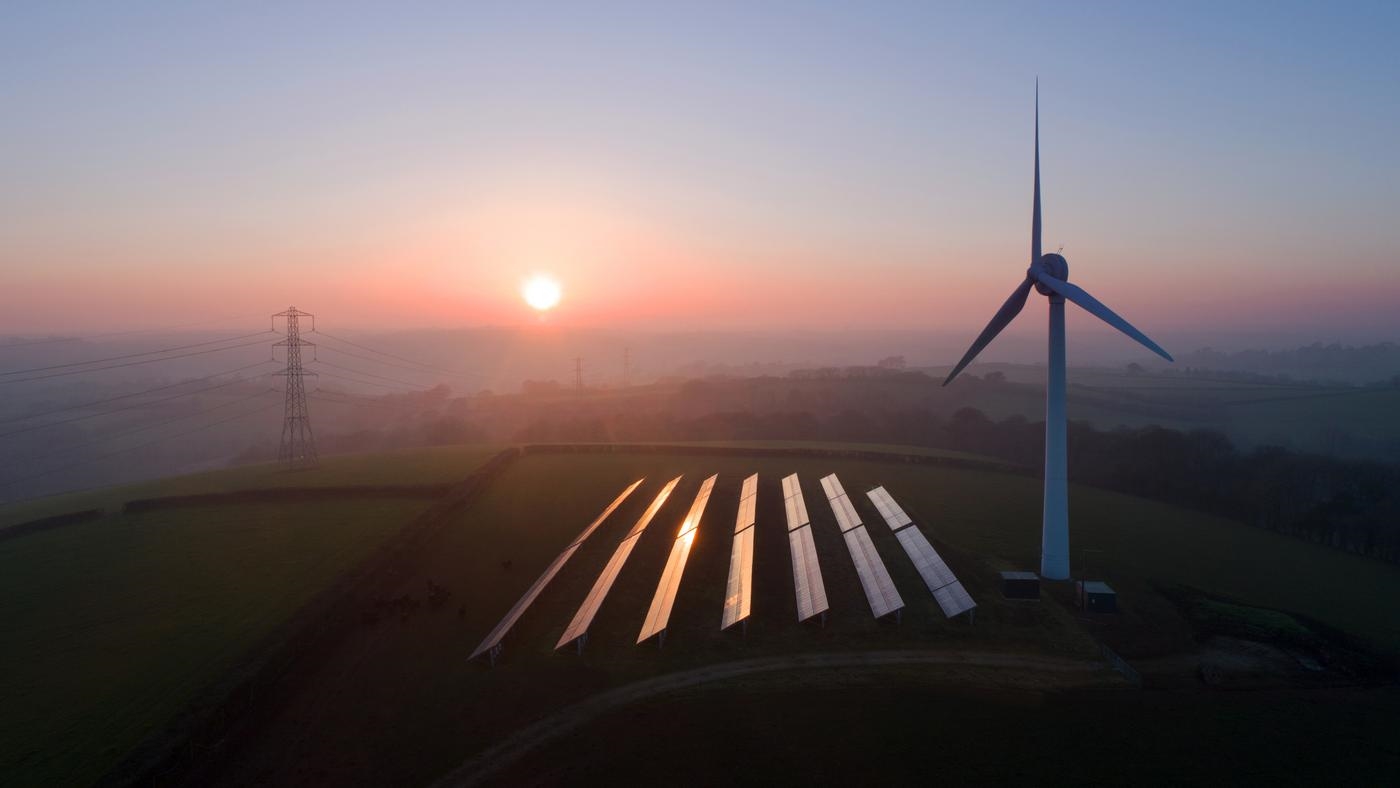Get Ed Crooks' Energy Pulse in your inbox every week
Gas price signals show need for increased supply
Soaring prices in Europe and Asia show that the market needs more gas. The US has the resources to meet that demand, but has hurdles to overcome
1 minute read
Ed Crooks
Vice Chair Americas and host of Energy Gang podcast

Ed Crooks
Vice Chair Americas and host of Energy Gang podcast
Ed examines the forces shaping the energy industry globally.
Latest articles by Ed
-
Opinion
The Trump administration remakes US environmental approvals
-
Opinion
What do President Trump’s tariffs mean for energy?
-
Opinion
US tariff announcements add to uncertainty
-
Opinion
US energy companies brace for tariff impact
-
Opinion
What does DeepSeek AI mean for energy?
-
Opinion
Questions over the Trump administration’s plans for solar and wind
The price system, in the famous words of the economist and philosopher Friedrich Hayek, is “a mechanism for communicating information… which enables individual producers to watch merely the movement of a few pointers, as an engineer might watch the hands of a few dials, in order to adjust their activities.” In international gas markets right now, those pointers are heading into the red.
European gas prices have been hitting record highs. This week the October 2021 contract for European benchmark TTF gas went above per megawatt hour, equivalent to more than $24 per million British Thermal Units. That is about five times its level of a year ago. The soaring cost of gas has contributed to power prices also hitting record highs, sparking protests, factory shutdowns and emergency relief measures, and raising concerns about the impact on consumers over the coming winter.
In Asia, LNG prices are at similar levels, trading at around $20 per mmBTU. Yet the response from US exporters has so far been muted. The last US LNG export project to be given final investment decision was Venture Global’s Calcasieu Pass, more than two years ago in August 2019.
“The price signals are screaming that the market needs more gas. But there is a series of barriers that needs to be overcome before US companies can respond with new commitments to invest in additional supply,” says Alex Munton, Wood Mackenzie’s principal analyst for Americas LNG.
Some of the factors that are driving gas prices to their current heights in Europe and Asia will be transitory. The Russian government said this week that a rapid regulatory approval for the now complete Nord Stream 2 pipeline would “significantly balance price parameters for natural gas in Europe, including on the spot market”. But as Europe phases out its coal-fired power, along with nuclear power in Germany, and its own production declines, its need for imported gas will grow.
US companies are not the only players seeking to take advantage. Qatar Petroleum took FID on a huge capacity expansion in February, and Russia also plans a big increase in LNG production. But US exporters can still be highly competitive.
There is a central challenge for US companies, however, in managing the risks associated with developing multi-billion dollar plants. In the first wave of US LNG development, buyers were generally prepared to take price risk in 20-year contracts, which made it possible for relatively small companies to finance large plants. For the next wave of projects, those contracts have been much more difficult to secure.
Climate policies are playing a part in that. Although demand for gas is being supported by the shift away from coal for power generation, in the longer term net-zero policies imply lower gas demand, too. Climate campaigners can also deter utilities from signing long-term gas purchase deals. Engie of France last year pulled out of talks over a possible US$7 billion deal with NextDecade, after a campaign by Friends of the Earth Europe.
The gap could be tailor-made for the oil and gas Majors, which have the scale and experience to manage the market risks. But as Wood Mackenzie’s chief analyst Simon Flowers explained last week, they have this year been cautious about committing to large investment projects or even long-term sales contracts. BP’s second agreement with Woodfibre LNG in British Columbia, a 15-year contract announced in May, was one of only very few such deals done in 2021.
The attitude of the Biden administration is another uncertainty swirling around the US LNG industry.
Whereas President Barack Obama was a supporter of US gas exports, seeing no contradiction between his climate policies and allowing the industry to grow, President Joe Biden’s position has been harder to read. He signed an executive order soon after taking office, to “require that federal permitting decisions consider the effects of greenhouse gas emissions and climate change”; a requirement that could be used to obstruct future LNG projects.
The state department last month appointed Amos Hochstein, who worked with President Biden in the Obama administration and later at LNG developer Tellurian, as senior advisor for energy security. That looks like a sign that the administration may be shifting towards stronger support for LNG exports, and Hochstein has this week been raising concerns about Europe’s reliance on Russian gas. But the practical significance of his position for the US industry has yet to be seen.
One of the US projects that seems closest to making the breakthrough to FID is Tellurian’s Driftwood LNG, which is working towards a decision by early next year. Tellurian has addressed the price risk issue by signing deals with Vitol, Gunvor and Shell based on a combination of the Asian benchmark JKM and the European TTF, netted back for transportation charges. Driftwood looks like “potentially a fast-track US LNG project”, Munton commented. But it still needs to secure financing and probably more gas assets to supply the plant in its vertically integrated business model.
Wood Mackenzie still expects strong growth in US LNG exports over the coming decade. The outlook for market growth, especially in Asia, combined with the resource base and production capabilities of the US, means there is enormous potential. But developers, customers, lenders and policymakers have work to do for that potential to be realised.
US gas prices follow world markets
The surge in natural gas prices has even affected the US, as it becomes increasingly integrated into world markets. Benchmark Henry Hub has been trading as high as about US$5.50/mmBTU, its highest level since 2014. High LNG prices in Asia and Europe have meant that US exports have rebounded from their slump last summer, and US liquefaction plants are running at close to full capacity, taking about 11 billion cubic feet per day.
US gas supply has not been responding to the higher prices, as producers put balance sheet repair and cash distributions to shareholders ahead of increased capital spending. Current production is still running about 4 bcf/d lower than the peak of 97 bcf/d in December 2019.
One factor that would be expected to temper US gas demand as prices reach current levels would have been a shift back to coal for power generation. But continued retirements of coal-fired plants, and an increased reliance on wind and solar power on the grid, have been changing that. The familiar relationship between coal and gas-fired generation, which would favour coal at Henry Hub prices above about $3.50 / mmBTU, has been breaking down.
Prices could no longer be expected to be “lower for longer”, said Eugene Kim, Wood Mackenzie’s research director for Americas gas. “’Higher for longer’ may be on the cards… The upcoming winter stands in a perilous position."
In brief
President Biden said his administration would be “going after the bad actors and pandemic profiteers in our economy”, and cited fuel prices as an example. “There’s lots of evidence that gas prices should be going down, but they haven’t,” he said.
President Biden on Friday convened an online meeting of the Major Economies Forum, a group intended to foster international co-operation on climate change. The president was urging other countries “to do more to slash greenhouse gas emissions” ahead of the COP26 UN climate talks in November, the New York Times reported. The US and EU are backing an initiative to cut world methane emissions by 30% by the end of the decade, and hope to persuade other countries to sign up.
Much of the president’s agenda for cutting US greenhouse gas emissions rests on legislation currently being negotiated over in Congress. The House Energy and Commerce committee put out a briefing note on the Democrats planned climate, infrastructure and healthcare legislation, known as the Build Back Better Act. The most important energy-related provision is the proposed US$150 billion Clean Electricity Performance Program, which would introduce a system of grants and taxes for electricity providers, creating an incentive for them to increase their supplies of low-carbon power by 4% each year.
Opec sharply revised up its forecast of next year’s oil demand. It now expects demand to average 100.8 million barrels per day in 2022, an upward revision of nearly 1 million b/d from its previous estimate. The new forecast means oil consumption would hit a new record high next year, contradicting claims that the world might have reached “peak demand” for oil in 2019.
And finally: another fictionalised treatment of the great genius of electrical engineering, Nikola Tesla. Stewart Copeland, best known as the drummer in The Police, has written an opera about Tesla, ‘Electric Saint’, which was given its world premiere in Weimar, Germany, a couple of weeks ago. The opera focuses on the conflict between Tesla and Thomas Edison, described in the programme as “the Steve Jobs and Bill Gates of their time: one the brilliant marketer and businessman, the other a visionary and tech guy”. There are still a few performances left, starting on Saturday night and running into November. The trailer on YouTube is too short to give much of a sense of it, but it looks intriguing, anyway.
Other views
Simon Flowers — Future energy: geothermal power
Gavin Thompson — Is Asia’s oil market recovery losing pace?
Kateryna Filippenko — COP26: The global gas industry’s path to a sustainable future
David Brown and others — One giant leap: President Biden’s plan for repowering America
John Cochrane — Climate economics
James Dyke, Robert Watson and Wolfgang Knorr — The concept of net zero is a dangerous trap
Quote of the week
“One of the things we’ve chosen not to go into is wind and solar… These are technologies that are relatively mature. There is plenty of capital that’s available. The returns in wind and solar are actually being bid down, and we’ve concluded that management in our company can’t create value for shareholders by going into wind and solar.” — Mike Wirth, chief executive of Chevron, explained the company’s thinking in not following the European oil and gas Majors into investments in wind and solar power.
Chart of the week
This comes from one of the regular briefings Wood Mackenzie is currently publishing, showing the implications of COP26 and the latest developments in global climate policy for a range of energy and natural resources sectors. It shows projections for global demand for thermal coal in three possible future states of the world: our base case forecast, showing our view of the most likely outcome, and two scenarios designed to show pathways consistent with limiting global warming by the end of the century to 2 °C or 1.5 °C. In all three possible futures, thermal coal demand drops sharply by 2050.
But the chart makes clear that the pathways to limiting global warming require a rapid shift away from coal. In the 1.5 °C scenario in particular, the world must just about abandon coal use altogether within 30 years. For more details, and projections for metallurgical coal as well, you can download the full report.






